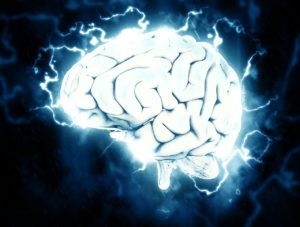Like any other prescription drug that affects the brain, Xanax can have both short-term and long-term effects on the brain. The effects of it will depend on the person, the dose, the duration of taking the drug, and other factors. Xanax is a drug that people commonly misuse. Even those who do not have a prescription for it may abuse it.
About 50% of people who misuse prescription drugs without a prescription use the prescription of a friend or family member. It is important to understand Xanax effects on the brain, signs of misuse, and how to help someone with an addiction.
What Is Xanax?
What does Xanax do to the brain? Xanax, also called alprazolam, is an oral drug that treats anxiety and panic disorders. It is in a class of medications called benzodiazepines, which act on the central nervous system to produce a calming effect. These drugs enhance the effects of GABA in the body. GABA is a natural chemical that reduces excitability. Since anxiety comes with added excitability, Xanax can be a highly effective treatment for severe anxiety.
When physicians prescribe Xanax, they often start people on lower doses. They gradually increase the dose until the drug starts working well. How often and how much a person uses the drug will depend on several individual factors. Although it is an effective treatment for anxiety, it may lose its effectiveness over time. This is because many people develop a tolerance for it. When that happens, the risks of abuse and addiction increase.
Side Effects of Xanax
Side effects of Xanax can vary widely. While some people may only have one side effect, others may have multiple side effects. It is also possible to notice new side effects as time passes. These are some common alprazolam side effects:
- Drowsiness
- Lightheadedness or dizziness
- Low energy
- Depression
- Insomnia and restlessness
- Headaches
- Confusion
- Fainting
- Memory problems
- Irritability
- Lack of coordination
- Nervousness or anxiety
- Muscle twitching
- Lower libido
There are many other potential side effects as well, such as diarrhea or constipation, vomiting, inflammation, rash, chest pain, dry mouth, muscle twitching, and some rarer side effects. It is important to report any side effects to a doctor promptly. If someone notices a person experiencing throat swelling, chest pain, or fainting from Xanax, it is important to seek emergency medical help or call 911.
Why Xanax Abuse Risks Are High
Two reasons why people abuse Xanax are tolerance and withdrawal. The combination of these two effects can be unpleasant enough that people take the drug more often than they should or in higher doses. Tolerance happens when the body becomes accustomed to the drug and it starts to lose its effectiveness at the same dose. In the early stages, doctors can increase doses. However, when a person takes a larger dose and develops a tolerance, the effects can be dangerous.
As a tolerance persists, a person may start to feel withdrawal symptoms before it is time to take another dose of Xanax. Although research shows that it is difficult to assess benzodiazepine withdrawal, it is usually evident in the behavioral or mood changes it creates. A person who experiences mild withdrawal symptoms may feel agitated or have mood swings. People who do not feel the same effects from the drug may start abusing it.
Effects of Xanax on the Brain
Xanax can have both short-term and long-term effects. When a person abuses this drug, it can have permanent or lasting effects on the brain. It is important to understand both short-term and long-term effects.
Short-Term Effects
In some cases, doctors prescribe Xanax for short-term use. For example, someone who is dealing with severe grief, preparing for a major surgery, or dealing with something else that may only create temporary anxiety may use Xanax temporarily. Short-term effects usually subside after a person tapers off as directed and stops using Xanax. These are some of the short-term effects:
- Reduction of anxiety or stress
- A feeling of sedation
- Slowed thinking processes
- Reduction in reflexes or impulses
- Decreased ability to make rational decisions
- Slowed heart rate and respiration
- Lower blood pressure
Long-Term Effects
A person whose anxiety is not temporary will need continual treatment to manage symptoms. Although there are other drugs that are better for long-term use, some physicians may prescribe Xanax depending on a variety of other factors. Some long-term effects can be permanent.
These are common long-term effects of Xanax use:
- Changes in the brain’s neuropathways
- Increased susceptibility to diseases
- Changes in behavior or mood
- Increased tolerance that leads to dependence
Dependence on Xanax makes it especially hard to taper off. When long-term effects develop, professional treatment is essential to prevent further damage or more serious risks associated with addiction. Another long-term effect that researchers found among many long-term Xanax users was memory loss. However, people who stopped using the substance showed considerable improvement in memory function a few years later.
Why Xanax Affects Moods and Behaviors
As noted previously, GABA affects excitability and reduces it. If a person lacks adequate chemicals to reduce excitability, there may be mood swings and irritability. GABA plays a role in directly and indirectly affecting behaviors. When a person takes Xanax, it may be effective for a short time or a long time, depending on the individual. If the drug is not as effective after a while, anxiety, irritability, and moodiness can return.
Adjusting doses is something that physicians do base on clinical recommendations. However, each person responds to drugs differently. For some people, Xanax may not be effective. Instead of reducing anxiety, it may cause additional anxiety if the person experiences other unpleasant side effects. Those side effects may exacerbate the existing anxiety. Also, as a person builds a tolerance, it is more common to see mood and behavior changes. Whenever these changes are evident, it is important to talk to the prescribing physician.
Signs of Xanax Addiction
For many people, it is hard to tell when an addiction develops. Building a tolerance, mood changes, behavior changes, and the inability to stop using the substance are signs of addiction. Loved ones may be able to identify signs of addiction by observing the resulting changes in a person’s life.
These are some signs of Xanax addiction:
- New financial or legal troubles related to using or obtaining Xanax.
- Significant changes in mood or behavior.
- Withdrawal from social activities, work, studies, and family obligations.
- Neglecting personal hygiene.
- Unusual sleepiness or lethargy.
- Empty pill bottles or a stash of medication.
A person may also be especially defensive when asked about Xanax use or problems. Additionally, some people closely guard a desk drawer, a bag, a cupboard or another place where they keep their Xanax hidden. Since most people try to hide a substance use disorder, it can take careful observation to identify the signs.
Treatments for Xanax Addiction
There are several ways to treat a Xanax addiction. Supervised detox is the first step. This process helps remove the substance from the body. Professionals monitor people for side effects and may use medication-assisted therapy to keep people more comfortable and to treat anxiety.
Depending on a person’s living situation and other factors, a professional may recommend residential or outpatient treatment. Outpatient treatment is better for people with a lower risk of relapse and those who have a strong support system at home. Residential treatment is better for high-risk individuals since it involves staying in a facility 24/7.
There are several approaches to therapy, including family therapy, individual therapy and group therapy. Each one provides different benefits for a person with a Xanax addiction. Having family support, friends and individual support helps reduce the risk of relapse. Therapists teach people how to identify triggers or behaviors and cope with or change them. They also use holistic therapies to support overall wellness, and they use a dual diagnosis approach to treat underlying anxiety and substance use disorder simultaneously.
Finding Treatment for Xanax Addiction in Tennessee
At Grace Land Recovery, we provide residential treatment, outpatient treatment, detox, and case management to people who struggle with addiction. We also help people through each step of recovery and teach them how to beat the cycle of addiction. Our team even provides comprehensive treatments that address every issue, including underlying mental health issues that contribute to addiction.
If you or a loved one need Xanax addiction treatment in Tennessee, we are here to help. Our Memphis facility is safe, supportive, and serene. To learn more about what does Xanax do to the brain or addiction treatment for alprazolam, please contact us.
References:
https://www.samhsa.gov/data/sites/default/files/report_2686/ShortReport-2686.html
https://pubmed.ncbi.nlm.nih.gov/11594436
https://www.drugabuse.gov/publications/drugfacts/prescription-cns-depressants


